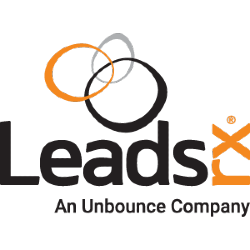We can talk all we want about what multitouch attribution is, why you need it, and why—if you're not using marketing analytics already—you are falling behind, or at least not getting everything out of your marketing campaigns.
But the proof is in the pudding. Here are actual case studies—complete with measurable results—of marketers putting data and insights to work for their businesses or their customers' brands.
TV manufacturer optimizes ad spend across channels
A Top 5 global leader in TV manufacturing used LeadsRx attribution to gain a better understanding of how its sales ecosystem was working. Historically, the company had kept ad spend low, relying instead on high brand name recognition.
The company asked LeadsRx to provide attribution insights into all its marketing channels, with a focus on organic (unpaid) channels and the top converting channels of search traffic and direct visits. Confident, but without solid data, the enterprise wanted to know whether its brand recognition driving those channels was enough to carry the brand into and through the 2019 holiday buying season.
In October 2019, the company measured 50,900 conversions that brought in $127,700 in revenue across its various marketing channels: direct, Facebook, referral, and email, as well as organic (Google, Bing, Yahoo).
The attribution results: After the examination of marketing programs using attribution data and insights, the company concluded that the channel mix was fine, but it needed to tweak spending on each of those channels to optimize return on ad spend (ROAS). In November 2019, the company had 99,600 conversions and hauled in revenue of $903,200. Transactions improved 95%; revenue increased 600%.
Attribution provided a full view of the company's marketing ecosystem—and showed the company exactly how its various marketing channels worked together on the path to conversion. The analysis of those channels confirmed the assumption that 90% of new customer sales were generated from organic sources.
Auto dealer gets spike in Web lift and conversions
A locally owned Pittsburgh-based multimedia company with market-leading media outlets in both Pittsburgh and Kansas City, Steel City Media is a radio company that expanded into radio advertising over the course of its 30 years in business, and it now serves as an agency for many of its clients.
In Kansas City, Steel City Sales Manager Michael Hiatt uses LeadsRx attribution data to help auto dealer advertisers dial in on what is working and, just as important, what is not.
Max Motors, a Steel City Media client, operates 10 franchises, nine dealerships, and a collision center in five cities in Kansas and Missouri—and continues to expand. Impressive Web lift numbers point to specific radio ads' working hard to bring car shoppers to its auto group website and into its dealerships to make purchases.

The attribution results: In May of 2021, there was a 16% lift in traffic to Max Motors' website; 5.5 interactions per radio commercial on Wednesdays; 7 interactions per commercial in the 10 AM to 3 PM daypart; 6.9 interactions per 15-second commercial; and 5.8 interactions per commercial on Steel City Media's station, KFKF.
Using impartial attribution data and insights to quantify how offline radio channels are indeed providing reach to would-be buyers gives both Steel City and its customers comfort and confidence.
"Prior to using LeadsRx services, it was a challenge for Max Motors to accurately attribute the success of their radio commercials," Hiatt said. "By offering the LeadsRx opportunity, they have not only maintained their investment, but increased it on a monthly basis, and have added other assets."
Automotive radio attribution study reveals audio's impact
iHeartMedia—the number one audio company in the United States, reaching nine out of 10 Americans every month—partnered with LeadsRx to conduct the largest study ever on automotive radio attribution.
Here are the five attribution secrets for automotive advertisers:
- Radio drives immediate Web traffic: Automotive advertisers earned an average 17% lift in Web traffic attributable to radio marketing—an average of 8 website visits per commercial.
- Radio drives new potential customers: 59% of website visits attributable to iHeartMedia radio marketing originated from new shoppers who had never previously visited the site.
- Marketing tactics influencing response include dayparts, day of week, and ad length: Four marketing tactics helped drive effective automotive radio advertising, including advertising on all dayparts, advertising on all days of the week, using multiple ad lengths, and reaching an audience across multiple stations.
- Endorsements drive optimal results because radio is a companion: Campaigns that included local on-air radio influencers generated an average of more than two times greater response than campaigns that did not include local radio influencers.
- Reach and frequency are the top contributing factors to success: Combining reach and frequency with a commercial volume of only 10 ads per day (using a mix of ad lengths, dayparts, and days of week) led to greater than twofold response rate.
Radio raises the roof for construction advertiser
A broadcast company with a substantial radio portfolio wanted to show one of its biggest clients, a large-scale roofing company, the value it receives from its broadcast advertising—particularly the "lift" the ads provide to its website traffic and overall marketing efforts. Also, the broadcaster wanted the owner of the roofing company to recognize the impact he himself had on its advertising effectiveness, because he appeared in a few spots that performed well.
As a show of good faith, and in response to the pandemic's biting down on the economy in 2020, the broadcast company placed ads on two additional radio stations for free and pushed for one more paid channel to increase the roofing company's reach and, hopefully in turn, increase traffic to its website.
The attribution results: From February to May 2020, each month there was an increase in traffic to the roofing company's website driven by broadcast advertising. In May, with the addition of advertising on the two new free stations—which made up nearly half of traffic driven by radio—plus the added paid station ads, total clicks to the site increased from 286 in February to 1,166 in May. That's a 307% increase.
As the spot numbers increased thanks to the ads on the new stations, overall lift to the company's site also went up in a linear fashion. By May, broadcast jumped to 28% overall lift, up from 7% in February.
Impartial insights tell the story
Without bias, marketing analytics—specifically marketing attribution—proved to the previously cited businesses and agencies that their advertising works. More important, it helped them adjust their marketing spend so they could optimize ROAS and increase marketing performance.




